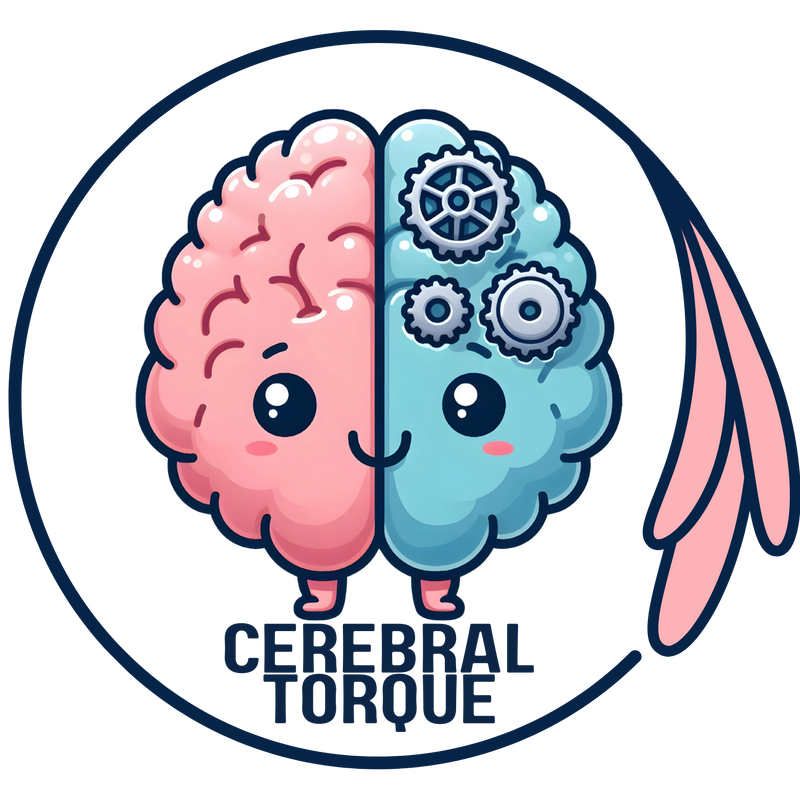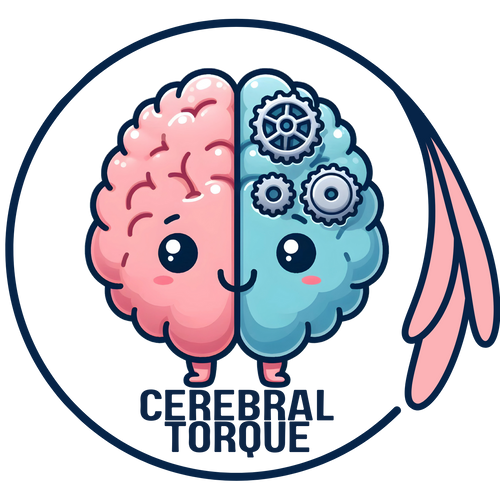Chronic Pain and Brain Gene Expression
Posted on July 07 2025,
Chronic Pain and Brain Gene Expression
Study Overview: A Breakthrough in Understanding Pain
A groundbreaking study published in PAIN journal represents the largest investigation of how chronic pain changes gene activity in the human brain. This research, involving brain tissue from 304 donors, has uncovered what's actually happening in the brains of people with chronic pain conditions like migraine.
Revolutionary Discovery
This study identifies specific immune cells in the brain's emotional center as key players in chronic pain, representing a major shift in understanding what causes persistent pain.
"This research shows there are real, measurable changes in how genes work in the brains of people with chronic pain. Think of genes like switches that control how cells function. In chronic pain, thousands of these switches are flipped differently, especially in the brain's immune cells called microglia. This isn't psychological - it's biological proof that chronic pain conditions like migraine involve real cellular changes that we can potentially target with new treatments." - Cerebral Torque
What This Means for Pain Patients
Chronic pain affects one in five American adults, making it one of the most common and disabling health conditions. For too long, people with chronic pain have struggled not only with their symptoms but also with skepticism from others about whether their pain is "real." This research provides concrete biological evidence that chronic pain involves measurable changes in brain cell function.
Why This Study Matters
Scientific Validation: Provides biological proof that chronic pain involves real changes in brain cell activity
Treatment Hope: Identifies specific cell types and molecular pathways that could be targeted with new therapies
Understanding Differences: Shows that genetic risk for pain and having chronic pain involve completely different biological processes
How the Research Was Done
The study analyzed brain tissue donated for research from 304 people, focusing on four specific brain areas known to be involved in processing pain and emotions. By comparing brain tissue from people who had chronic pain with those who didn't, researchers could identify what was different at the cellular level.
Brain Areas Studied
Understanding Gene Activity
Think of genes like instruction manuals for cells. Each cell type reads different parts of these instructions to do its job (skin cells in the toe don't need to secrete hormones, for example. Each cell has the same genetic code, but the difference is which of these genes are actually expressed). In chronic pain, researchers found that certain cells were reading their instruction manuals very differently - like switching from the "normal operation" chapter to the "emergency response" chapter.
What Makes This Study Special
Size and Scope: This is the largest study ever done looking at brain gene activity in chronic pain
Cell-Level Detail: Rather than just looking at whole brain regions, researchers examined individual cell types
Multiple Comparisons: Compared chronic pain with migraine, medication effects, and genetic risk factors separately
Rigorous Analysis: Used advanced statistical methods to ensure the findings were reliable
Study Participants
Who was included: 304 people who donated their brains for research, including 84 with chronic pain history
Age range: Average age of 47 years
Detailed records: Comprehensive medical and lifestyle information for each donor
Key Research Findings
Summary of the most significant discoveries from this groundbreaking brain gene expression study.
| Finding Category | Key Discovery | Clinical Significance |
|---|---|---|
| Primary Discovery |
BLA Microglia Central Role
|
Revolutionary target for chronic pain therapy |
| Brain-Level Changes |
Limited Bulk Tissue Changes
|
Cell-specific changes more important than overall brain changes |
| Pathway Analysis |
Enriched Biological Pathways
|
Multiple therapeutic targets identified |
| Comparative Analysis |
Disease Specificity
|
Chronic pain has unique molecular signature |
The Game-Changer: Brain Immune Cells Drive Chronic Pain
The study's most significant finding is that specialized immune cells in the brain, called microglia, are the main drivers of chronic pain. These cells, particularly in an area called the amygdala (the brain's emotional center), showed massive changes in gene activity in people with chronic pain.
What Are Microglia?
Understanding Brain Immune Cells
What they are: Specialized immune cells that live permanently in the brain and spinal cord
Normal job: Act like security guards, patrolling for damage and cleaning up cellular debris
In chronic pain: Get stuck in "high alert" mode, promoting inflammation and making pain worse
Where they matter most: In the amygdala, the brain region that processes emotions and fear
The Striking Numbers
The research found over 2,000 genes with altered activity in chronic pain patients. 77.8% of these changes were concentrated in microglia within the basolateral amygdala - that's nearly 1,810 genes behaving differently in these specific cells.
Why This Discovery Matters
It's not random: The concentration of changes in these specific cells is so high it couldn't happen by chance
It matches animal studies: Similar changes have been seen in mouse models of chronic pain
It explains the emotional component: The amygdala processes fear and emotions, explaining why chronic pain affects mood and anxiety
It provides treatment targets: We now know exactly which cells and brain regions to focus on for new therapies
What This Means for Treatment
This discovery opens entirely new approaches to treating chronic pain. Instead of just blocking pain signals, future treatments could target the underlying immune dysfunction in the brain that drives chronic pain conditions like migraine.
Potential New Treatment Approaches
- Anti-inflammatory drugs that can reach the brain
- Treatments that calm overactive microglia
- Targeted therapies for the amygdala region
- Combination treatments addressing both inflammation and pain signals
Born With It vs. Developed It: Two Different Stories
One of the study's most important discoveries is that being genetically prone to chronic pain and actually having chronic pain involve completely different biological processes. It's like comparing the blueprint for a house with the actual wear and tear that happens after people live in it.
Understanding Genetic Risk vs. Experience
The researchers looked at genetic markers that increase someone's risk of developing chronic pain and compared this to the brain changes seen in people who actually have chronic pain. Surprisingly, these involved entirely different genes and cell types.
What This Means in Practical Terms
Think of genetic risk like having a car that's more likely to break down - the problem is in the basic structure. But actually having chronic pain is like having a car where the security system is stuck in alarm mode - the problem is in the active response systems.
Why This Matters for Patients
Prevention vs Treatment: Preventing pain in at-risk people might need different approaches than treating existing chronic pain
Family History: Having family members with chronic pain doesn't mean you'll have the same brain changes if you develop pain
Treatment Response: Your genetic background might affect which preventive treatments work, but your current pain involves different biological processes
Hope for Treatment: Even if you're genetically prone to pain, the actual pain condition involves targetable immune processes
Different Cells, Different Solutions
Genetic risk primarily involved oligodendrocytes - cells that make the insulation around nerve fibers. But having chronic pain primarily involved microglia - the brain's immune cells. This suggests that preventing pain and treating existing pain require completely different therapeutic strategies.
Treatment Strategy Implications
For Prevention: Focus on protecting nerve fiber insulation and structural integrity in at-risk individuals
For Treatment: Target immune cell activation and brain inflammation in people with established chronic pain
For Monitoring: Different biomarkers needed for risk assessment versus treatment response
For Drug Development: Separate research programs for preventing pain versus treating existing pain
What This Means for Patients and Treatment
How these research findings could transform chronic pain treatment and give hope to millions of patients.
| Area of Impact | How We Used to Think | What This Research Shows | What This Could Mean for You |
|---|---|---|---|
| Understanding Pain |
|
Brain immune cells drive chronic pain
|
Validation that your pain has a real biological basis |
| Treatment Development |
|
Specific cellular targets identified
|
Potential for new, more effective treatments with fewer side effects |
| Diagnosis and Monitoring |
|
Biological markers discovered
|
Potential for blood tests or scans that objectively measure your pain |
| Personalized Care |
|
Different pain types have different biology
|
Treatments tailored to your specific type of pain and biology |
Future Research Directions
This groundbreaking study opens numerous avenues for future research and therapeutic development. The identification of specific molecular targets provides a roadmap for the next generation of chronic pain treatments.
Immediate Research Priorities
High-Priority Research Areas
Microglia-Targeted Therapies: Development and testing of compounds that specifically modulate microglial activation in the amygdala
Biomarker Validation: Translation of gene expression signatures into clinically usable biomarkers
Mechanism Studies: Detailed investigation of how microglia contribute to pain sensitization and chronification
Drug Repurposing: Screening existing anti-inflammatory compounds for microglial effects in chronic pain
Long-term Research Goals
The research establishes a foundation for developing precision medicine approaches to chronic pain. Future studies will need to validate these findings in living patients and develop therapeutic strategies based on individual molecular profiles.
Research Translation Pathway
- Validation studies in living patients using neuroimaging and cerebrospinal fluid analysis
- Clinical trials of microglia-targeting compounds
- Development of companion diagnostics for treatment selection
- Investigation of combination therapies targeting multiple pathways
- Longitudinal studies tracking molecular changes during pain development
"This research fundamentally changes how we understand chronic pain - it's not a failure of willpower or pain tolerance, it's a measurable biological condition involving specific brain cells and molecular pathways. That biological reality gives us hope for biological solutions." - Cerebral Torque
This research summary is for educational purposes and represents current scientific understanding. Clinical applications are still under investigation. Patients should always consult with healthcare providers about their specific pain management needs and treatment options.
Mon, Nov 17, 25
Migraine Research - During the week of my absence.
Migraine Research - During the week of my absence. The Association Between Insomnia and Migraine Disability and Quality of Life This study examined how insomnia severity relates to migraine disability...
Read MoreSat, Nov 01, 25
Anti-CGRP Monoclonal Antibody Migraine Treatment: Super-Responders and Absolute Responders and When to Expect Results
Anti-CGRP monoclonal antibodies achieved 70% super-response and 23% complete migraine freedom in a one-year study. Most dramatic improvements occurred after 6 months of treatment. For patients with chronic or high-frequency...
Read MoreAll Non-Invasive Neuromodulation Devices for Migraine Treatment
Wondering if migraine devices actually work? This guide breaks down the latest evidence on non-invasive neuromodulation devices like Cefaly, Nerivio, and gammaCore. Learn which devices have solid research backing them,...
Read More



